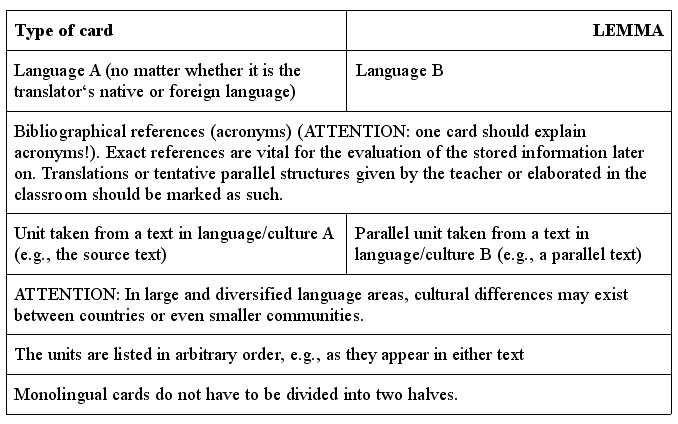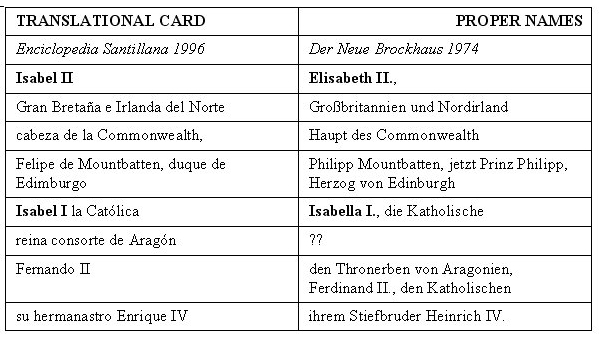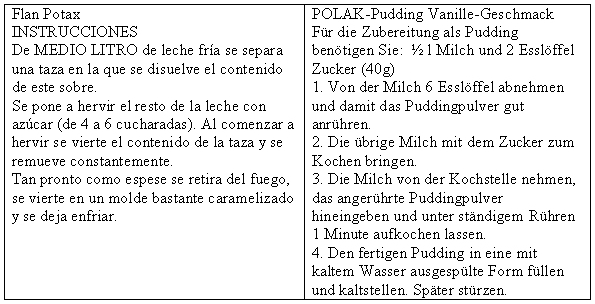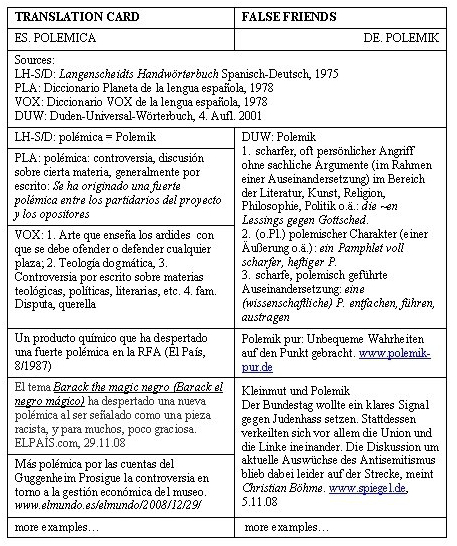Introduction
The translation process can be depicted as a circular process starting with the interpretation of the translation brief and proceeding counter-clockwise via source-text analysis and translation-strategy design to target-text production. The overall circle contains a number of smaller circular movements or “loops” that keep recurring between source-text situation and source text, between target-text situation and target text, between the individual steps of analysis, and between source-text analysis and target-text production. This means that at each step forward the translator looks back on the factors already analysed, and every piece of knowledge gained in the course of the process of analysis and comprehension may be confirmed or corrected by later findings (Nord 2005: 39).
Fig. 1: The translation process from a pedagogical perspective
Looking at this process from a pedagogical perspective1, the smaller circles represent the research or search phases, where the translator tries to compensate for any lack of knowledge or competence when confronted with a difficulty in the translation process. Just to name a few examples: knowledge of professional routines or conventions may help in the interpretation of an unclear brief; knowledge of the domain of specialization, including its concepts and terminology, can clarify apparently incoherent passages or defects in the source text; knowledge of the source and the target language and culture (e.g. with regard to text-type conventions or measuring norms) is needed both in source-text analysis and in target-text production as well as for strategy design; theoretical and methodological knowledge concerns the choice of appropriate strategies or procedures in order to solve translation problems.
Where to look for help
Students cannot be expected to be familiar with all the possible sources of information a translator may need at a certain moment during the translation process. In their foreign-language classes, they are usually told to use a dictionary – some teachers let them find their own ways (which usually lead to a – sometimes minute – bilingual dictionary), others insist on the monolingual dictionary. But most students have no idea of the various types of dictionaries, let alone of other sources of information which may be much more useful in certain cases. Some have never heard of a reverse dictionary or a thesaurus. It seems obvious that they have to be taught where to look for help fast and efficiently before embarking on a translation task. My own experience has shown that a general course on documentation and research in translation can be taught independently of the students’ working languages and cultures, using mother-tongue examples and leaving the specification and the practical exercises to language-specific translation classes in a later phase of the training.
Taking the looping model as a guideline again, we could classify information sources according to the moment in the process where they may be needed. During training, professional information may be inquired from the teacher (at least if they are familiar with professional practice), later from experienced colleagues. Domain-related information can be retrieved from handbooks, textbooks, encyclopedias as well as from experts or looking at the object itself (e.g., the machine whose documentation has to be translated, or the computer programme that has to be localized). Terminology is found in specialized dictionaries, data bases, glossaries, but may also be inquired from experts, often along with (the) factual information. Linguistic information is stored in grammars and dictionaries, but particularly with regard to the target language, more so if it is the student’s foreign language, it is often much more helpful to look at existing texts of the target culture, where we find not only isolated items, like in a dictionary, but models of language in use, including information on style or text-type conventions, i.e. cultural information that is otherwise hard to find, particularly for novice translators who have not lived in the foreign culture. The same applies to translation-methodological information: textbooks on translation or translation theory may be interesting to read, but if a particular piece of information is needed on the spot, we would probably again turn to existing texts, including previous translations of the same or similar texts or text types. We do not have to reinvent the wheel of translation solutions over and over again: most problems have been solved by somebody else before!
In her empirical study on professional translators’ use of information sources, Britta Nord (2001: 160) draws on the following systematic classification of tools:
Fig. 2: Typology of Tools (adapted from B. Nord 2002 : 160)
Apart from bilingual dictionaries, what the subjects in Nord’s study used most was texts. Nord makes a distinction between reference works as texts and auxiliary texts, which have not been produced for reference purposes but are used by translators precisely with this intention. All the texts of a given culture form a culture-specific repertoire, where each text is related to the others by similarities (or discrepancies) of text type and genre, topic, addressee specification, text function, as well as time- or space-dependent features. This means that the text the translator is expected to produce in the translation process, or a model of it, may already be a part of the repertoire. It has to be found and made use of, with due consideration of possible differences with regard to topic, addressees, intended function, time or place which may be responsible for certain characteristics of the existing text.
Fig. 3: Intertextuality in translation process
Whatever its purpose, a translated text is bound to enter the target-culture repertoire and become a part of the culture-specific intertextuality system. There, it might be supposed to conform to a particular text class or genre or to represent certain register or time-specific features. In some cultures, translated texts (or, possibly, all texts translated from a particular source language as opposed to those translated from other source languages) may form a set of their own and show certain typical features (maybe even of “translationese”) which are not found in non-translated texts.
Texts as a tool in the translation process
These existing texts of the target language and culture are what I call auxiliary texts. As is shown in Fig. 2, we can distinguish three types of auxiliary texts: previous translations (of the same or a similar text) for methodological information, background texts for factual and linguistic or cultural information, and parallel texts, i.e. target-culture texts of the same or a similar type, which provide information on genre and style conventions but also on forms of expression, collocations, idiomatic language use, register, and so on. Sometimes, a parallel text is so much like a translation of the source text in question that it can serve as a model for the translation. In this case, we may speak of a model text.
In this context, parallel texts are defined as authentic, non-translated texts chosen from the target-culture text repertoire because they represent the genre the target text is expected to belong to. This use of the term may cause confusion because (a) the Coseriu school of contrastive linguistics has used originals and their translations as “parallel texts” for the analysis of source and target language usage, arguing that no other texts are equally “parallel” with regard to communicative functions, and (b) the concept of parallel corpus used in corpus-based translation studies usually refers to a corpus of translations, which is compared to the corresponding source texts, whereas a corpus of non-translated texts for comparison with translated texts is called “comparable corpus”. Nevertheless, I will stick to the term “parallel text” because it was used in translator training (at least in German contrastive textology, cf. Hartmann, 1980 or Spillner, 1981) long before corpus-based translation studies came into existence, and translation scholars have always made a point of not regarding translations as a reliable source for the study of language use because there is no empirical proof that the communicative functions of texts and their translations are always the same.
Prospective translators should, therefore, be trained to do what professional translators obviously do all the time: use intertextuality as a tool in order to produce translations which can be expected to be acceptable for the target-culture audience in specific communicative situations. They should know which type of auxiliary text can solve which kind of problems and difficulties encountered in the translation process and how to use auxiliary texts for an efficient acquisition of translation competence. But they should also receive some guidance with regard to how to store the information retrieved from auxiliary texts for future use.
How to store the information found in auxiliary texts: TRACI
After retrieving a lot of important information from an auxiliary text, the question arises where to store the information for the moment it may be needed again. In the translation classroom, students normally take notes of what they learn from the teacher or from the discussions going on during a class. But no matter whether the “notebook” they are using is a pencil-and-paper or an electronic one – if they do not have a systematic method of storing the information, it will be difficult for them to remember where to find it on later occasions. An alphabetical card index may be the solution to make information easily retrievable. For this purpose, I propose a combined card index consisting of four parts in one alphabet: one index for linguistic material related to a particular topic, another one for language phenomena, a third one for translation methodology and a fourth for terminology cards based on contrastive terminology work.
The general structure of the index card includes an indication of the type of card and the lemma in the headline, the biographical references of the sources, and then the material either from A to B or from B to A. They are entered on the card in chronological order, as they appear in the text(s). There is no need for a systematic order. The cards should be as little sophisticated as possible because any attempt at perfection might kill the motivation to make the card index operate as a tool for research and learning. If the students work with more than one language-and-culture pair, the cards can also be adapted to comparing three items.
Fig. 4: General structure of the index card
In the following sections, I will discuss a few examples of text pairs and the index cards resulting from the analysis of auxiliary texts.
Example 1: Previous translations as a source of translational information
The first example shows parallel text fragments from online editions of a Spanish and a German quality newspaper. In both fragments, the Russian personal and geographical names appear in transcribed form, i.e. they have been “translated” from the Cyrillic alphabet. Translators working with Spanish and German, for example, would not be familiar with the norms and conventions of transcription or transliteration, and these translated texts are a shortcut to the way transliteration is practiced in the respective papers.
The corresponding index card would contrast the Spanish and the German (and perhaps a third, English or French) forms. Boris Yeltsin appears in the Spanish but not in the German fragment. The question marks may serve as an incentive to look for the German form of this name, too, in order to fill the gap.
Example 2: Parallel encyclopedic texts as a source of terminology and domain-related style
The two following texts, taken from an American and a Spanish encyclopedia, highlight the differences between the information provided by a text and that provided by a dictionary. The corresponding units have the same meaning but are different with regard to form or syntax or even with regard to the order in which they appear in the text.
The corresponding index card, for which more sources have been used, illustrates the way the textual units are contrasted on the card.
Example 3: Parallel texts as a source of information on proper names
The next example deals with historical proper names. The two pairs of parallel texts have been taken from general print encyclopedias. It is interesting to note that Elizabeth is rendered by Isabel in Spanish and Elisabeth in German, whereas the Spanish Isabel is Isabella, not Elisabeth, in German (the same applies to English). This shows the conventionality in the use of (foreign) proper names, which is not always in line with logic.
The corresponding index card again lists the names with some context, which may also be interesting for the translator who is translating a text on the topic.
Example 4: Parallel texts as a source of cultural information
Example 4 shows two instructions to prepare ready-made vanilla custard. They could serve as model texts for each other’s translation into Spanish or German, respectively, and provide information on measurement conventions and on text-type or genre conventions of recipes.
The first index card derived from this pair of parallel texts indicates the measures used in the recipes. Apart from a measurement like una taza (“a cup”) instead of a certain number of tablespoons, the (culture-specific) difference in quantity is striking (and gives rise to intensive debates in the classroom…).
The second index card shows the genre conventions mainly with regard to lexis (e.g., separar – abnehmen, dejar enfriar – kaltstellen, verter – hineingeben) and syntax (e.g., impersonal passive in Spanish vs. infinitives in German, no connectors in German, connecting phrases in Spanish).
Example 5: Language-related card
The fifth example is a language-related card concerning a pair of Spanish-German false friends: polémica vs. Polemik. A student who finds that her translations of this word from Spanish into German (or vice versa) are often marked as wrong or inacceptable may want to solve this problem once and for all. Therefore, a limited dictionary search in the two languages can lead to an index card that shows rather clearly where the meanings of the two words overlap and where they cannot be used as translations of each other.
A quick Google search shows at a glance how little the two words have in common (apart from their etymological meaning). More examples can be added to the card when they come up in translation classes or in other contexts
Example 6: General terminology card
The last example shows what a general terminology card might look like in TRACI. Of course, a general encyclopedia is not too reliable a source if you have to translate a highly specialized text, but in order to get a rough outline of a field of knowledge, it may do for the sake of the example. It is also quite interesting to see where the two cultures differ with regard to specificity of terms.
In the course of the training programme, especially the terminology cards will be developed further, according to the framework of scholarly terminology work. This example was used in the general course on documentation and research for translators in the first semester of the training programme.
Conclusion
To sum up, we may say that the trainee translator’s combined card index is a tool to develop and enhance translational competence. It can serve to store the information extracted from textual sources (or elaborated in the translation classroom), but it is also a useful way of stimulating the students’ motivation to enhance their world or cultural knowledge in a systematic way. The great advantage is that it is a personalized tool, tailored to the needs and the level of competence of each student. Some cards will become superfluous (and may be trashed) when the knowledge stored on them has passed to long-term memory, others will be rewritten and systematized, as the material becomes too rich to fit onto a single card. By leafing through the cards from time to time, old knowledge is re-activated and the need for more or more specific knowledge becomes obvious.














